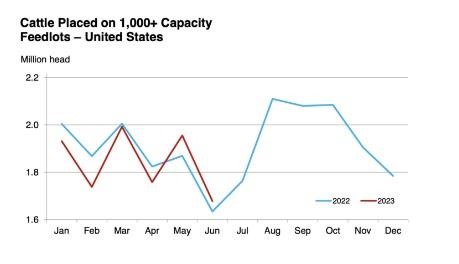By Lisa Schnirring
In an updated assessment on H5N1 avian influenza, European health groups said though the risk to humans is still low, worrisome signs include the appearance of certain mutations in circulating strains and mass animal mortality events that hint at a greater risk of spread among mammals.

The assessment comes from the European Food Safety Agency, the European Centre for Disease Prevention and Control (ECDC), and the European Union reference lab and was posted today on the ECDC's website. It covers data collected from December 2022 to March 1.
Gull patterns increase threat to poultry
Officials said poultry outbreaks have declined in the region since a peak in November, but, given mass die-offs in gulls in multiple countries due to the virus, poultry outbreaks involving the 2.3.4.4b H5N1 clade could increase in the months ahead.
Gulls will be moving inland to breeding colonies that overlap poultry-production areas, the report notes. The 2.3.4.4b H5N1 clade is now circulating on multiple continents.
In the full 43-page report, the groups said that, from September to March, virus detections in seabirds were unexpectedly high, especially in gulls, with large morality events seen in France, Belgium, the Netherlands, and Italy. Genetic analysis of viruses from black-headed gulls points to a southward spread of the virus and that it persisted after the summer in resident wild birds.
More genetic changes following mammal infections
Genetic analysis of the viruses from infected European birds over the winter suggests that H5N1 still binds preferentially to avian receptors.
The experts note, however, that some of the viruses from mammals have markers in the PB2 protein associated with increased virulence and replication in mammals—very rarely seen before 2020. They said the changes probably emerged following transmission to animals and possibly have public health implications.
The groups said most recent H5N1 detections in mammals involve species such as red fox that hunt or scavenge infected birds or dead animals. However, they pointed to three mass mortality events: one involving harbor seals in Maine, an outbreak at a Spanish mink farm, and a die-off in Peruvian sea lions.
Transmission events to and between mammals, serologic evidence of infection in wild boar and pigs, and mutations that would make the virus better adapted to mammals are concerning and need to be closely followed, they said.
More sporadic infections in humans are possible in people exposed to sick or dead birds, and the groups put that risk as moderate. The recent severe cases from Asia and South America underscore the risk of unprotected contact with infected birds, they note. The risk of travel-related cases in humans is very low.
Source : umn.edu